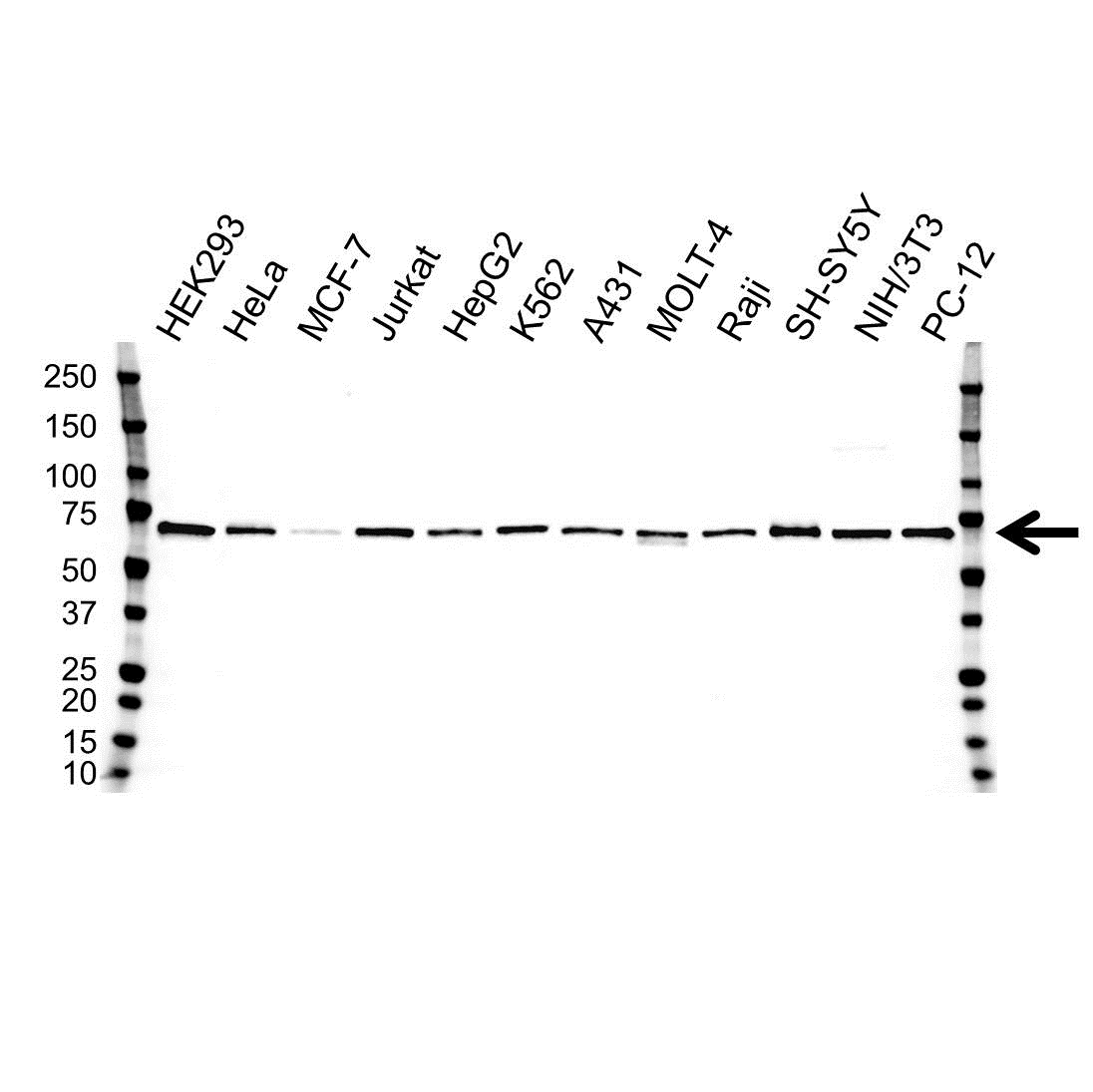SMAD4 antibody | 1B6

Mouse anti SMAD4
- Product Type
- PrecisionAb Monoclonal
- Clone
- 1B6
- Isotype
- IgG1
- Format
- Purified
- Specificity
- SMAD4
- Target Species
- Human
- Western Blotting
- Anti SMAD4 detects a band of approximately 65 kDa in Jurkat cell lysates.
- Species Cross-Reactivity
-
Target Species Cross Reactivity Mouse Rat - N.B. Antibody reactivity and working conditions may vary between species.
- Product Form
- Purified IgG - liquid
- Preparation
- Mouse monoclonal antibody prepared by affinity chromatography on Protein G from ascites.
- Buffer Solution
- Phosphate buffered saline.
- Preservative Stabilisers
- 0.09% Sodium Azide (NaN3).
- Immunogen
- Purified recombinant fragment of human SMAD4 expressed in E. coli
- Regulatory
- For research purposes only.
- Guarantee
- 12 months from date of despatch.
- Acknowledgements
- PrecisionAb is a trademark of Bio-Rad Laboratories.
| Application Name | Verified | Min Dilution | Max Dilution |
|---|---|---|---|
| Western Blotting | 1/1000 |
| Description | Product Code | Applications | Pack Size | List Price | Your Price | Quantity | |
|---|---|---|---|---|---|---|---|
| Goat anti Mouse IgG (H/L):HRP | STAR207P | WB | 2 ml |
|
Log in | ||
| List Price | Your Price | ||||||
|
|
Log in | ||||||
| Description | Goat anti Mouse IgG (H/L):HRP | ||||||
- UniProt
- Q13485
- Entrez Gene
- SMAD4
- GO Terms
- GO:0001666 response to hypoxia
- GO:0003700 sequence-specific DNA binding transcription factor activity
- GO:0005829 cytosol
- GO:0030616 transforming growth factor beta receptor, common-partner cytoplasmic mediator activity
- GO:0005813 centrosome
- GO:0007179 transforming growth factor beta receptor signaling pathway
- GO:0007183 SMAD protein complex assembly
- GO:0010718 positive regulation of epithelial to mesenchymal transition
- GO:0010843 promoter binding
- View More GO Terms
- GO:0010862 positive regulation of pathway-restricted SMAD protein phosphorylation
- GO:0030308 negative regulation of cell growth
- GO:0030509 BMP signaling pathway
- GO:0030511 positive regulation of transforming growth factor beta receptor signaling pathway
- GO:0032444 activin responsive factor complex
- GO:0032909 regulation of transforming growth factor-beta2 production
- GO:0042177 negative regulation of protein catabolic process
- GO:0042803 protein homodimerization activity
- GO:0045892 negative regulation of transcription, DNA-dependent
- GO:0060021 palate development
- GO:0060391 positive regulation of SMAD protein import into nucleus
- GO:0060395 SMAD protein signal transduction
- GO:0070411 I-SMAD binding
- GO:0070412 R-SMAD binding
VMA00252
If you cannot find the batch/lot you are looking for please contact our technical support team for assistance.
Please Note: All Products are "FOR RESEARCH PURPOSES ONLY"
View all Anti-Human ProductsAlways be the first to know.
When we launch new products and resources to help you achieve more in the lab.
Yes, sign me up
